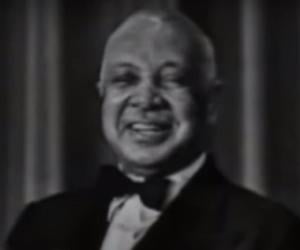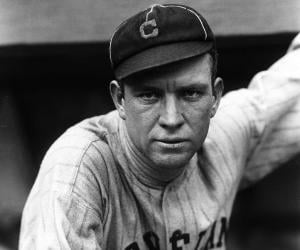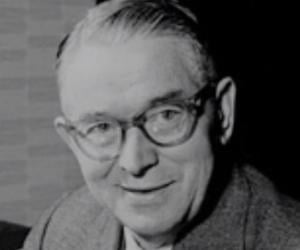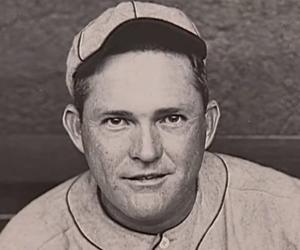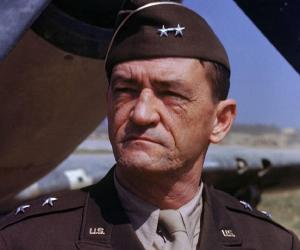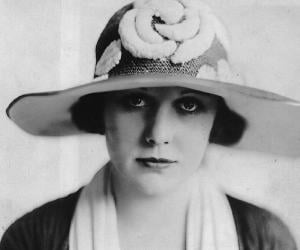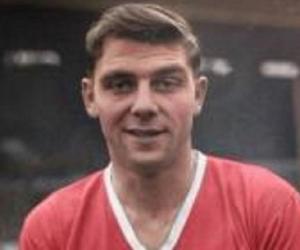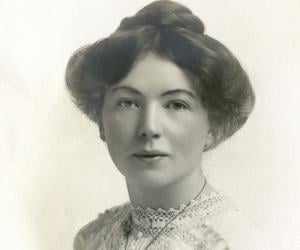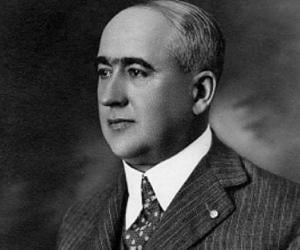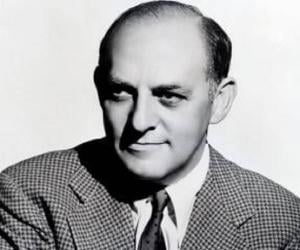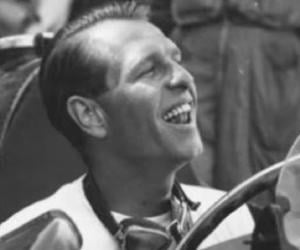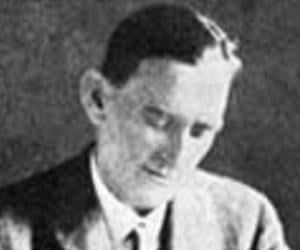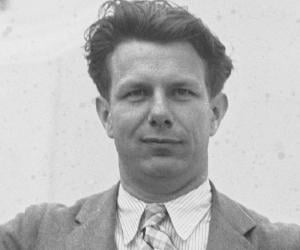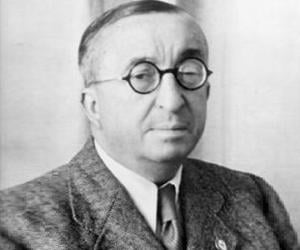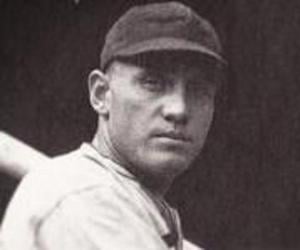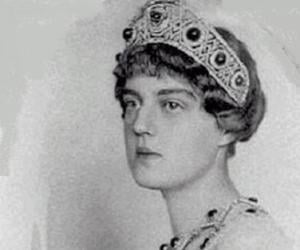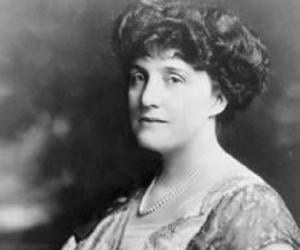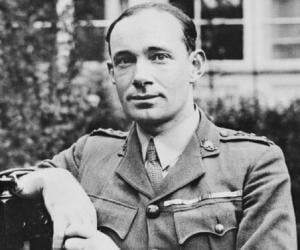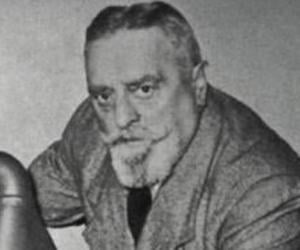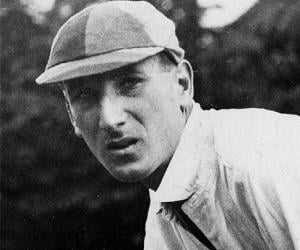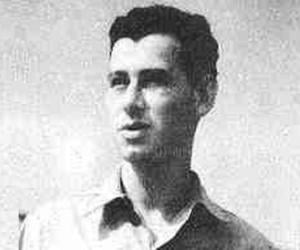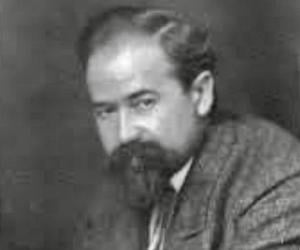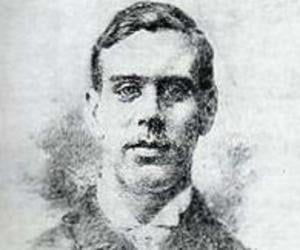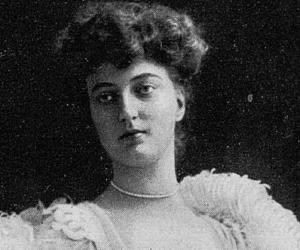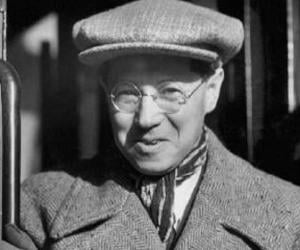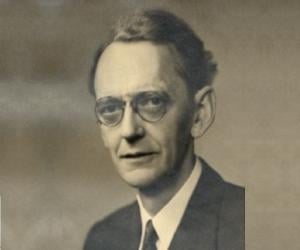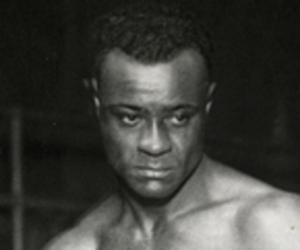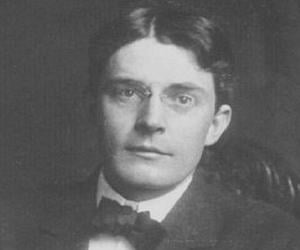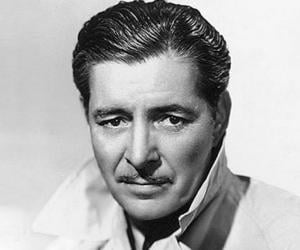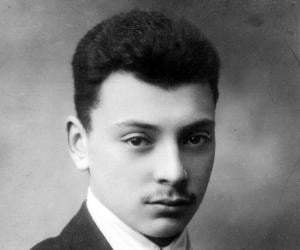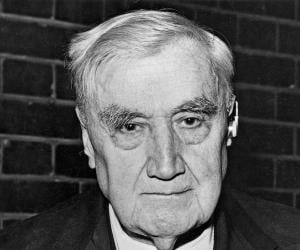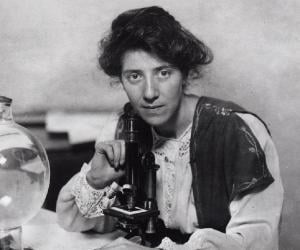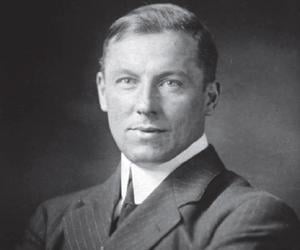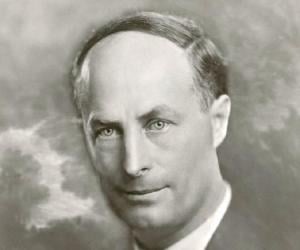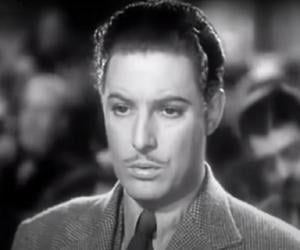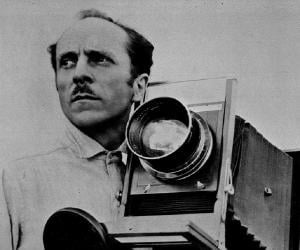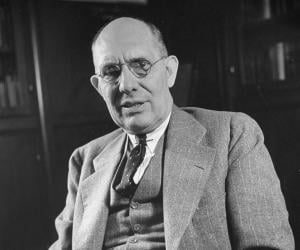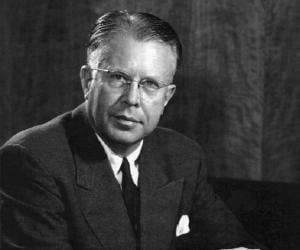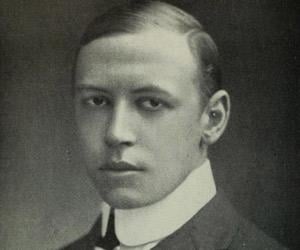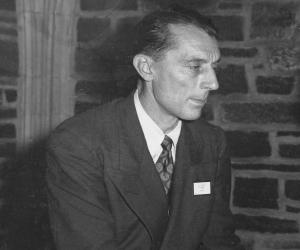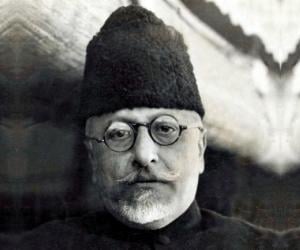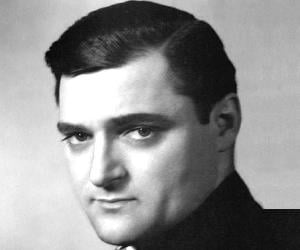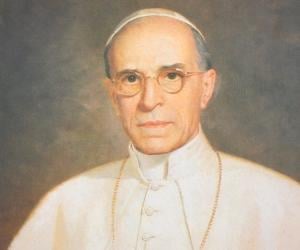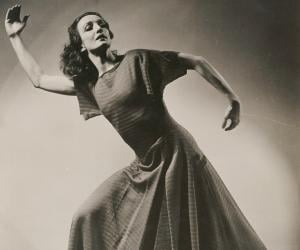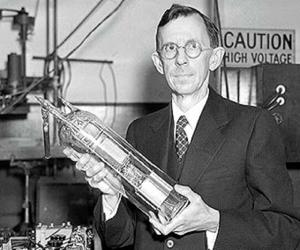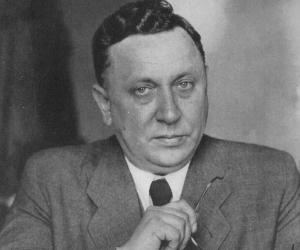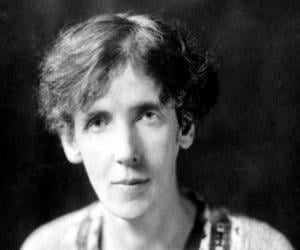Famous People Who Died In 1958
Discover the most famous people died who died in the year 1958. This list includes people like Ralph Vaughan Williams, Rosalind Franklin, Pope Pius XII, Ronald Colman, Harry Warner and many more. This list of celebrities is loosely sorted by popularity. People featured on this list, include political leaders, poets, novelists and physicists who died in 1958. This list includes people from United States, United Kingdom, France & Italy and many more countries.
Vote for Your Favourite People Who Died In 1958
Right IconThis ranking is based on an algorithm that combines various factors, including the votes of our users and search trends on the internet.
Birthdate: January 9, 1878
Sun Sign: Capricorn
Birthplace: Travelers Rest, South Carolina, United States
Died: September 25
John B. Watson was the first to introduce the theory of behaviorism to psychology. He believed human behavior, like animal behavior, should be studied under objective and experimental conditions. One of his experiments included conditioning the fear of white rats into an 11-year-old boy he named Little Albert.
Birthdate: February 9, 1891
Sun Sign: Aquarius
Birthplace: Richmond, Surrey, England
Died: May 19
3
Wolfgang Pauli(One of the Pioneers of Quantum Physics and Winner of 1945 Nobel Prize for Physics)
Birthdate: April 25, 1900
Sun Sign: Taurus
Birthplace: Vienna, Austria
Died: December 15
Nobel Prize-winning Austrian physicist Wolfgang Pauli is remembered for his contribution to quantum physics and for laying down the Pauli principle. While he was initially married to a cabaret dancer, the marriage ended in a divorce after a year. His written works are considered classics in science.
Birthdate: October 12, 1872
Sun Sign: Libra
Birthplace: Down Ampney, England
Died: August 26
Birthdate: October 15, 1880
Sun Sign: Libra
Birthplace: Edinburgh
Died: October 2
Apart from being a successful botanist, Marie Stopes was also a popular activist, known for her contribution to the feminist cause. A leading supporter of birth control, she established the UK’s first clinic for family planning. She was also known for her books Married Love and Wise Parenthood.
Birthdate: November 16, 1873
Sun Sign: Scorpio
Birthplace: Florence, Alabama, United States
Died: March 28
Birthdate: January 16, 1874
Sun Sign: Capricorn
Birthplace: Preston, Lancashire, England
Died: September 11
Robert W. Service was a British-Canadian poet and writer. Popularly called "the Bard of the Yukon," he wrote some of the most commercially successful poetry of his era. A bank clerk by profession, he often wrote while traveling for work. Besides poetry, he also wrote fiction and non-fiction. He was often compared to English writer and novelist Rudyard Kipling.
Birthdate: May 5, 1882
Sun Sign: Taurus
Birthplace: Shipley
Died: October 14
Douglas Mawson was an Australian Antarctic explorer, geologist, and academic. Counted among the most important leaders of the Heroic Age of Antarctic Exploration, Mawson was honored with a knighthood in 1914. Best remembered for his contribution to Australian geology, Mawson was featured on the Australian one-hundred-dollar note from 1984 to 1996.
Birthdate: March 18, 1905
Sun Sign: Pisces
Birthplace: Withington, Manchester, England
Died: June 9
10
Tris Speaker
(Baseball Player)
Birthdate: April 4, 1888
Sun Sign: Aries
Birthplace: Hubbard, Texas, United States
Died: December 8
Birthdate: March 24, 1886
Sun Sign: Aries
Birthplace: Highland Park, Illinois, United States
Died: January 1
Edward Weston was an American photographer and archer. Regarded as one of the most influential and innovative American photographers of all time, Weston became the first photographer to be honored with a Guggenheim Fellowship in 1937. Some of his photographs, such as Nude, 1925 and Nautilus, are among the most expensive photographs ever sold.
12
Ole Kirk Christiansen
(Inventor)
Birthdate: April 1, 1891
Sun Sign: Aries
Birthplace: Filskov, Denmark
Died: March 11
Birthdate: March 2, 1909
Sun Sign: Pisces
Birthplace: Gretna, Louisiana, United States
Died: November 21
Height: 5'9" (175 cm)
14
Claire Lee Chennault
(US Military Aviator Who Commanded the US Army Air Forces in China)
Birthdate: September 6, 1893
Sun Sign: Virgo
Birthplace: Commerce, Texas, United States
Died: July 27
US major general and military aviator Claire Lee Chennault is remembered for commanding the US Army Air Forces in China during WWII. He also formed the American Volunteer Group known as the Flying Tigers. He launched the commercial airline Civil Air Transport, which later became known as Air America.
Birthdate: October 21, 1895
Sun Sign: Libra
Birthplace: Paradise Valley, Nevada, United States
Died: January 11
Height: 5'2" (157 cm)
16
Duncan Edwards
(Football player)
Birthdate: October 1, 1936
Sun Sign: Libra
Birthplace: Woodside, Dudley, England
Died: February 21
Height: 5'11" (180 cm)
Birthdate: June 26, 1893
Sun Sign: Cancer
Birthplace: Lake Dick, Arkansas, United States
Died: August 15
Birthdate: August 29, 1876
Sun Sign: Virgo
Birthplace: Loudonville, Ohio
Died: November 25
Charles F. Kettering was an American engineer, inventor, and businessman. Kettering is credited with founding Delco Electronics Corporation. Holder of 186 patents, Kettering is also credited with the invention of Freon refrigerant for air conditioning and refrigeration systems. Over the course of his career, Charles F. Kettering won prestigious awards like the IEEE Edison Medal, Hoover Medal, and Franklin Medal.
Birthdate: August 8, 1901
Sun Sign: Leo
Birthplace: Canton, South Dakota, United States
Died: August 27
20
Christabel Pankhurst
(British Suffragette and Co-Founder of the 'Women’s Social and Political Union')
Birthdate: September 22, 1880
Sun Sign: Virgo
Birthplace: Old Trafford, Manchester, England
Died: February 13
Dame Christabel Harriette Pankhurst was a British suffragette who co-founded the Women's Social and Political Union. From 1912 to 1913, Pankhurst directed the organization's militant actions from France. After the war, Christabel Pankhurst settled down in the United States of America where she served as an evangelist for the Second Coming movement.
Birthdate: September 16, 1880
Sun Sign: Virgo
Birthplace: Wolverhampton
Died: June 28
Birthdate: March 19, 1900
Sun Sign: Pisces
Birthplace: Paris
Died: August 14
Frédéric Joliot-Curie was a French physicist whose discovery of artificial radioactivity earned him the 1935 Nobel Prize in Chemistry, which was jointly awarded to Frédéric and his wife Irène Joliot-Curie. Along with his wife, Frédéric is credited with founding the Orsay Faculty of Sciences, a physics and mathematics school within Paris-Saclay University. He had also won the Stalin Peace Prize.
Birthdate: November 11, 1888
Sun Sign: Scorpio
Birthplace: Mecca, Saudi Arabia
Died: February 22
Maulana Abul Kalam Azad was an Indian independence activist, Islamic theologian, and scholar. He played a key role in the Indian independence movement, serving as a senior leader of the Congress. His contribution to the Indian education system is recognized across India by celebrating his birthday as National Education Day.
24
Milutin Milanković
(Serbian Climatologist Who Gave the Explanation of Earth's Climate Changes, Which Partly Explained the Ice Ages)
Birthdate: May 28, 1879
Sun Sign: Gemini
Birthplace: Dalj, Croatia
Died: December 12
Milutin Milanković was a Serbian astronomer, mathematician, geophysicist, climatologist, and civil engineer. He is best remembered for his explanation of Earth's climate changes, which partly explained the ice ages. Milutin Milankovitch's biography inspired a 2007 documentary film titled A Traveler Through Distant Worlds and Times.
25
Harry Cohn
(Film producer)
Birthdate: July 23, 1891
Sun Sign: Leo
Birthplace: New York City, U.S.
Died: February 27
Birthdate: June 22, 1909
Sun Sign: Cancer
Birthplace: Minneapolis, Minnesota, U.S.
Died: March 22
Height: 5'5" (165 cm)
Birthdate: March 2, 1876
Sun Sign: Pisces
Birthplace: Rome, Italy
Died: October 9
Pope Pius XII served as the head of the Catholic Church and the sovereign of the Vatican City from 1939 till 1958. Of the many positions he had held, one was the secretaryship of the Department of Extraordinary Ecclesiastical Affairs. He is remembered for negotiating the treaty of Reichskonkordat.
28
Peter Collins
(Former British Racing Driver Who Died in a Fatal Crash in the 1958 German Grand Prix)
Birthdate: November 6, 1931
Sun Sign: Scorpio
Birthplace: Kidderminster, Worcestershire, England
Died: August 3
British racing-driver Peter Collins commenced his career at age 17 and gained-attention during Formula 3 races. He ranked third during the 1951 Autosport National Formula 3 Championship. He won the 1958 British Grand Prix and a couple of weeks later met with a fatal accident during the German Grand Prix. He was rushed to hospital, but died later that day.
29
John Hubert Marshall
(Archaeologist)
Birthdate: March 19, 1876
Sun Sign: Pisces
Birthplace: Chester, England
Died: August 17
Birthdate: October 17, 1895
Sun Sign: Libra
Birthplace: Chicago
Died: December 29
One of the pioneers of American modern dance, Doris Humphrey had begun her career with the Denishawn dance school. The daughter of a pianist mother, she later launched her own dance school with her mother as the manager. She also excelled in American vaudeville and promoted the dance movement theory.
31
Norman Bel Geddes
(American Theatrical and Industrial Designer)
Birthdate: April 27, 1893
Sun Sign: Taurus
Birthplace: Adrian, Michigan, United States
Died: May 8
American theatrical and industrial designer, Norman Bel Geddes helped popularize “streamlining” as a distinct modern style. He influenced the design of major furniture, railroads, automobiles, and hotels. His revolutionary vision led to a collaboration with Max Reinhardt in the theatrical production of The Miracle. Among his most notable designs was Futurama exhibit at the New York World's Fair of 1939.
32
Ernst Heinrich Heinkel
(Aeronautical engineer)
Birthdate: January 24, 1888
Sun Sign: Aquarius
Birthplace: Grunbach, Germany
Died: January 30
33
Chuck Klein
(Baseball player)
Birthdate: October 7, 1904
Sun Sign: Libra
Birthplace: Indianapolis, Indiana, United States
Died: March 28
Height: 6'0" (183 cm)
34
Grand Duchess Maria Pavlovna of Russia
(Nurse)
Birthdate: April 18, 1890
Sun Sign: Aries
Birthplace: Saint Petersburg, Russian
Died: December 13
Birthdate: October 22, 1881
Sun Sign: Libra
Birthplace: Bloomington, Illinois, United States
Died: February 1
36
Mary Roberts Rinehart
(Writer)
Birthdate: August 12, 1876
Sun Sign: Leo
Birthplace: Allegheny City, Pennsylvania (now Pittsburgh), United States
Died: September 22
37
Hubert Wilkins
(Australian Polar Explorer, Ornithologist, Pilot, Soldier, Geographer and Photographer)
Birthdate: October 31, 1888
Sun Sign: Scorpio
Birthplace: Mount Bryan, Australia
Died: November 30
Australian-born British explorer and ornithologist Hubert Wilkins is best remembered for pioneering the use of the submarine for polar exploration. While he initially studied photography and engineering, he later embarked on the world’s first transpolar airplane flight across the Arctic and the first over parts of Antarctica.
38
Viktor Schauberger
(Forester, Inventor, Writer)
Birthdate: June 30, 1885
Sun Sign: Cancer
Birthplace: Schwarzenberg am Böhmerwald
Died: September 25
Austrian forest caretaker, naturalist, pseudoscientist, biomimicry experimenter, inventor and philosopher, Viktor Schauberger came up with his own concepts based on his observations of nature. He mentioned in the Implosion magazine that the propeller was incorrectly designed by the aeronautical and marine engineers.
39
Douglas Jardine
(English Cricketer)
Birthdate: October 23, 1900
Sun Sign: Libra
Birthplace: Malabar Hill, Mumbai, India
Died: June 18
Height: 6'0" (183 cm)
Birthdate: July 10, 1902
Sun Sign: Cancer
Birthplace: Königshütte (Chorzów), Silesia
Died: June 20
Kurt Alder was a German chemist whose work on the Diels-Alder reaction, which is named after him and his teacher Diels, earned him the prestigious Nobel Prize in Chemistry in 1950. Alder is also remembered for working with Ferdinand Münz, the inventor of EDTA. Over the course of his career, Kurt Alder won many prestigious awards and honorary degrees.
Birthdate: July 2, 1923
Sun Sign: Cancer
Birthplace: New York City, New York, United States
Died: March 21
42
Alfred Weber
(Economist, Educationist, Sociologist, University teacher)
Birthdate: July 30, 1868
Sun Sign: Leo
Birthplace: Erfurt
Died: May 2
Alfred Weber was a German geographer, sociologist, economist, and theoretician of culture. Weber's work and contribution played a key role in the progression of modern economic geography. The younger brother of Max Weber, Alfred Weber contributed theories for analyzing social processes, social change as a confluence of civilization, and culture.
43
Willie Maley
(Scottish International Football Player and Manager)
Birthdate: April 25, 1868
Sun Sign: Taurus
Birthplace: Newry, County Down, Ireland
Died: April 2
44
Princess Louise of Orléans
(Princess)
Birthdate: February 24, 1882
Sun Sign: Pisces
Birthplace: Cannes, France
Died: April 18
45
Lion Feuchtwanger
(Novelist)
Birthdate: July 7, 1884
Sun Sign: Cancer
Birthplace: Munich, Germany
Died: December 21
46
Karl Lashley
(Psychologist, University teacher)
Birthdate: June 7, 1890
Sun Sign: Gemini
Birthplace: Davis
Died: August 7
47
James Michael Curley
(Politician)
Birthdate: November 20, 1874
Sun Sign: Scorpio
Birthplace: Boston, Massachusetts, United States
Died: November 12
48
Robert Service
(Writer, Poet, Novelist)
Birthdate: January 16, 1874
Sun Sign: Capricorn
Birthplace: City of Preston, Lancashire, United Kingdom
Died: September 11
Birthdate: August 1, 1881
Sun Sign: Leo
Birthplace: Rugby, England
Died: October 30
Birthdate: May 15, 1889
Sun Sign: Taurus
Birthplace: New Orleans, Louisiana, United States
Died: December 21
Height: 6'2" (188 cm)
